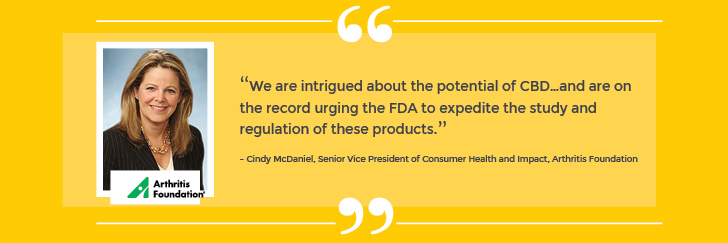CBD School: What veterans need to know about CBD

Valuing Vets: Support for the many who selflessly serve
September 3, 2020
Skyrocketing PTSD rates highlight the importance of participation in clinical trials
December 12, 2020
Veterans’ interest in CBD is growing as quickly as questions surrounding its safe use and efficacy. That’s why we created our CBD School Guide and related educational series. Aimed at supporting CBD interest, exploration, and usage, we hope that this series helps to answer commonly asked questions about CBD. -PTSD Chronicle Editor
THE PTSD CHRONICLE – CBD is becoming as common as aspirin in a growing number of medicine cabinets across the United States. Alongside that growth are calls from organizations like the American Cancer Society, Arthritis Foundation, and Michael J. Fox Foundation (MJFF), which would like to see additional support, study, and regulatory guidance behind this popular product.
The advocacy is welcome news to veterans, who face extraordinary challenges associated with the physical and mental rigors that come with service.
The want and need to do better for America’s heroes and their families is a part of the motivation behind MJFF’s support of legislation, which would, in part, enable the U.S. Department of Veterans (VA) to examine the effect of cannabis on chronic pain and PTSD, the two most common medical conditions among veterans.
Hope is ahead.
Although additional research will certainly help shed new light on the efficacy of CBD, there is much we already know about this plant-based compound which dates back to 2737 BC. It is detailed here in our CBD guide.
CBD 101
What is CBD? CBD, short for cannabidiol, is an active compound found primarily in the flowers and leaves of the cannabis plant. Primarily extracted from hemp, CBD has only traces (up to 0.03%) of THC, the major active ingredient in marijuana. Unlike THC, CBD does not have the same interactions with the receptors in the body, which means it won’t get you high.
Is CBD Addictive?
The World Health Organization (WHO) researchers found that CBD does not cause physical dependence and is not associated with abuse potential. Its November 2017 report states that CBD is considered non-addictive in humans and animals.

Subscribe to get expert advice, everyday hacks and free CBD products and shipping.
CBD appears to be a safe option that does not produce euphoria, intoxication, or addiction, according to Dr. Nora Volkow, the director of the National Institute on Drug Abuse (NIDA), in a statement to the U.S. House of Representatives.
Who are its Advocates?
A significant percentage of individuals with chronic conditions are experiencing more elevated levels of stress and anxiety issues as a result of the pandemic according to the Arthritis Foundation, which is among numerous advocacy organizations calling for the expedited study and regulation of CBD.
The interest in CBD is so high, that the Foundation issued a CBD Guide to help members navigate education, dosage and safe shopping.
Nearly 80% of its members use or are considering CBD use, according to a 2019 survey conducted by the Foundation. But does it work?

“Some, but not all, survey respondents report noticeable pain relief, sleep improvement and/or anxiety reduction,” according to Arthritis Foundation spokesperson Claire Villines
Patients who have chronic pain often experience higher stress and anxiety levels, so it’s not surprising that the American Academy of Pain Medicine is among national organizations advocating for CBD regulations and research.
Its largest and fastest growing group of constituents is consumers. Nationwide more than 80% want to see CBD regulated, according to Sally Greenberg, executive director of the National Consumer League, a consumer advocacy organization calling for the regulation of CBD.
What Researchers Say About CBD & PTSD
A 2019 literature study suggests that CBD has beneficial properties worth further study, particularly regarding tamping down so-called fight-or-flight response, as well as potentially reducing nightmares and sleep disorders related to PTSD.
Earlier studies, including a 2018 study, published in the Frontiers in Neuroscience, found that CBD reduces the retention of unpleasant memories. A similar study, conducted in 2016, reports that substances acting on the endocannabinoid system may reduce the symptoms that a person with PTSD experiences after a memory extinction procedure.
How CBD Works
Our body comes equipped with its own support system. One of them, the endocannabinoid system, naturally helps our body produce cannabinoids that regulate everything from mood, pain sensors, appetite, metabolism, and memory to our bone development and immune function.
Think of CBD as a potential “boosting agent.” Derived from plant-produced cannabinoids, CBD is comprised of the same helpful elements our body produces naturally.
Ready to Try CBD
CBD-based products come in many forms. It can be taken orally, applied to the skin, or inhaled. Talk to your doctor and/or a CBD specialist to explore which might be best for you.
 TINCTURE/SPRAY (Under Tongue). Tinctures are one of the most popular forms of CBD. Place tincture liquid under the tongue (sublingual) for 60 to 120 seconds to aid absorption and speed delivery into your bloodstream. Sprays are becoming more popular and work in a similar fashion. Whether you use a tincture or spray, most users feel effects within 15 to 45 minutes of dosing.
TINCTURE/SPRAY (Under Tongue). Tinctures are one of the most popular forms of CBD. Place tincture liquid under the tongue (sublingual) for 60 to 120 seconds to aid absorption and speed delivery into your bloodstream. Sprays are becoming more popular and work in a similar fashion. Whether you use a tincture or spray, most users feel effects within 15 to 45 minutes of dosing.
When you place CBD under your tongue, it gets absorbed directly into your bloodstream, bypassing the digestive system and metabolization by the liver.
Product taste varies by brand, so it may take some experimentation to find the right product for you. There are enough flavors and varieties to suit most any taste preference from mint and fruity flavors to more earthy varieties.
![]() ORALLY (By Mouth). Whether in capsule, food or liquid form, CBD is absorbed more slowly through the digestive tract. The process can delay the onset of the effect (1- 2 hours) depending on your stomach acids, food consumption, and other factors.
ORALLY (By Mouth). Whether in capsule, food or liquid form, CBD is absorbed more slowly through the digestive tract. The process can delay the onset of the effect (1- 2 hours) depending on your stomach acids, food consumption, and other factors.
 CAPSULES. (By Mouth). Capsules are a very reliable method that allows users to manage a consistent dosage of CBD. They are also are tasteless, odorless and convenient for individuals who are always on-the-go.
CAPSULES. (By Mouth). Capsules are a very reliable method that allows users to manage a consistent dosage of CBD. They are also are tasteless, odorless and convenient for individuals who are always on-the-go.
 TOPICAL (On the Skin). Topical CBD lotions, balms, and rubs can be applied directly to the skin. Some contain additives like menthol, capsaicin or camphor, which enhance the effect of the product. Critics note that these additives may mask the efficacy of the CBD product. Users that question CBD’s impact are encouraged to use CBD products that don’t contain additional additives so they can evaluate CBD’s effectiveness.
TOPICAL (On the Skin). Topical CBD lotions, balms, and rubs can be applied directly to the skin. Some contain additives like menthol, capsaicin or camphor, which enhance the effect of the product. Critics note that these additives may mask the efficacy of the CBD product. Users that question CBD’s impact are encouraged to use CBD products that don’t contain additional additives so they can evaluate CBD’s effectiveness.
Studies are underway to determine exactly how much CBD is absorbed via topical applications. Most users feel effects near immediately.
![]() VAPE/INHALER (Inhaled). CBD can be inhaled via a vaporizing or vape pen. The Centers for Disease Control and Prevention is investigating vaping-related hospitalization and deaths, which appear to be associated with additives, not the vaping compounds themselves.
VAPE/INHALER (Inhaled). CBD can be inhaled via a vaporizing or vape pen. The Centers for Disease Control and Prevention is investigating vaping-related hospitalization and deaths, which appear to be associated with additives, not the vaping compounds themselves.
The Dosage Doctor
CBD use recommendations vary. Experts advise:
Liquid forms of CBD require users to be mindful of both the amount of liquid product (the dose) and the among of CBD in each dose (concentration).
Experts say it is best to “go low and slow,” starting with just a few milligrams of CBD in sublingual form twice a day. Wait about a week before amping-up dosage and increase in small and equal increments over time. Once you find your sweet spot, you’ll have a better idea of how many milligrams you’ll need in order to notice a result.
Shopping Tips
There are a number of things to look for when buying CBD. Chief among them is where it’s grown. Look for U.S. grown products manufactured with domestically grown ingredients.
Check manufacturing processes. As CBD increases in popularity, more CBD brands are following Good Manufacturing Practice (cGMP) guidelines set forth by the FDA and other regulatory bodies to ensure consumer safety.
Look for a companies COA (Certificate of Analysis) from an accredited independent laboratory that uses validated, standardized testing methods approved by the American Herbal Pharmacopoeia (AHP), the U.S. Pharmacopeia (USP) or the Association of Official Agricultural Chemists (AOAC).
Every batch of every product made should be tested and available for customer review.
Trusted Research
Leave the research to the researchers. Credible CBD brands cannot nor should not claim that their products cure health conditions.
Editor’s Note: As with any supplement, users should seek medical advice before use.





